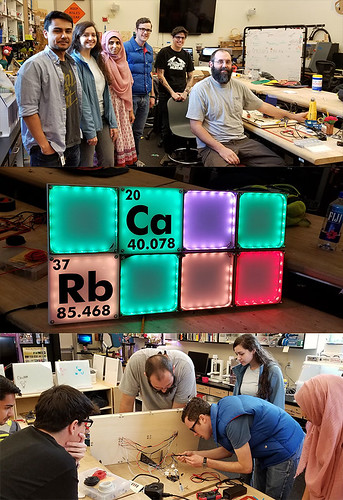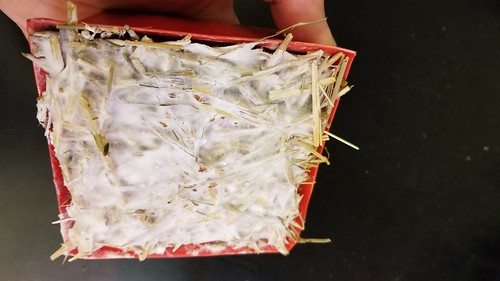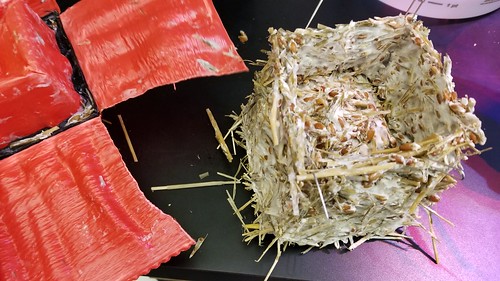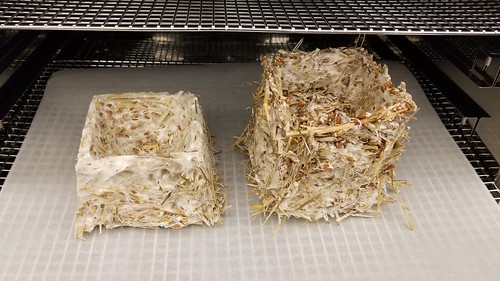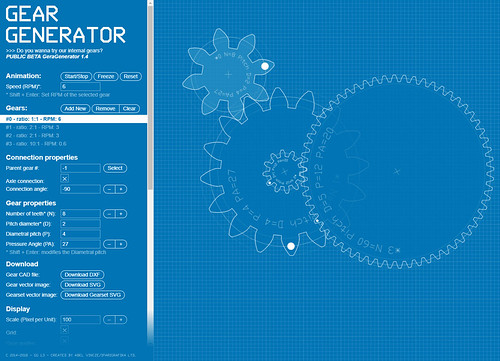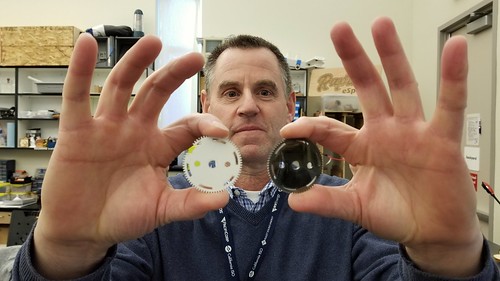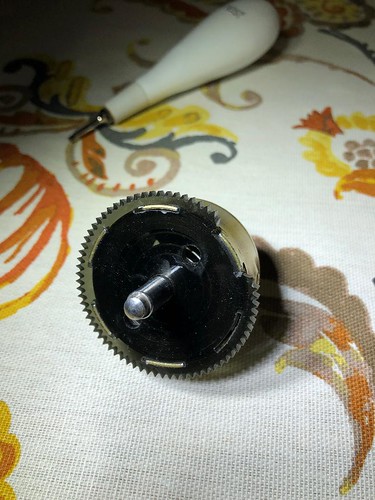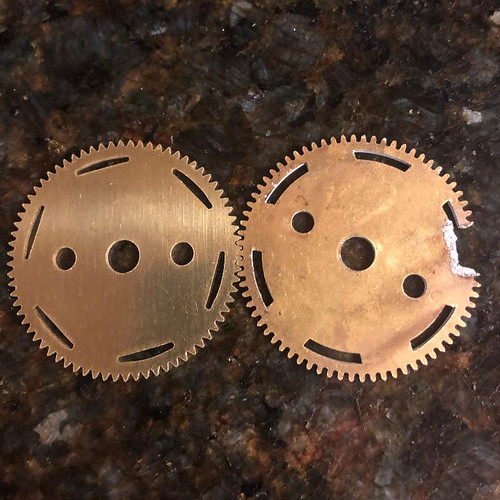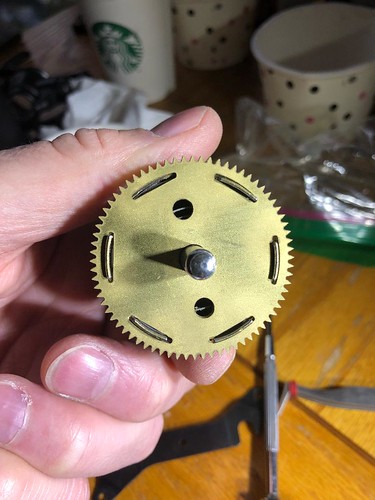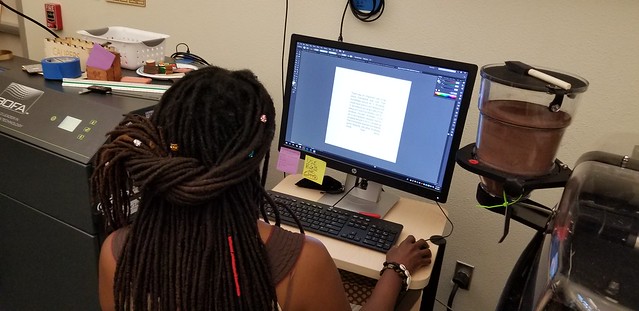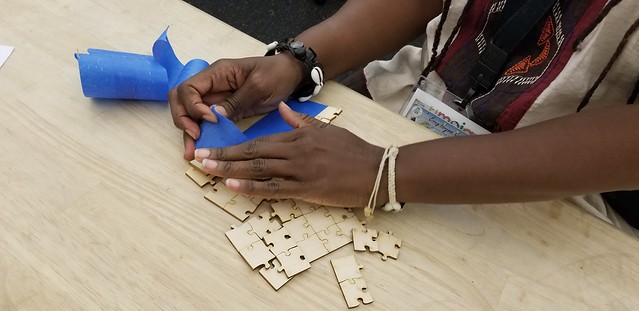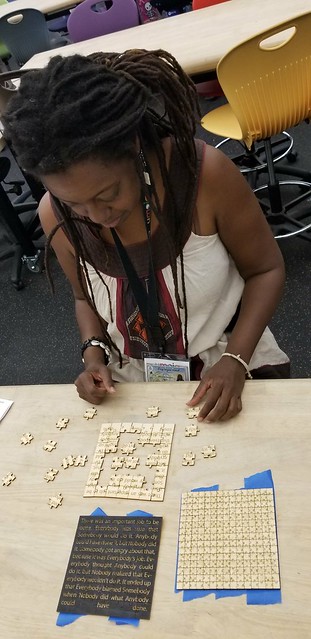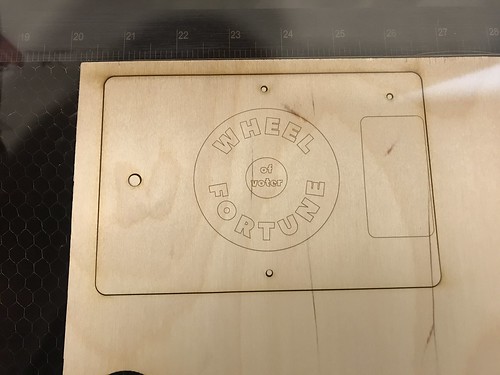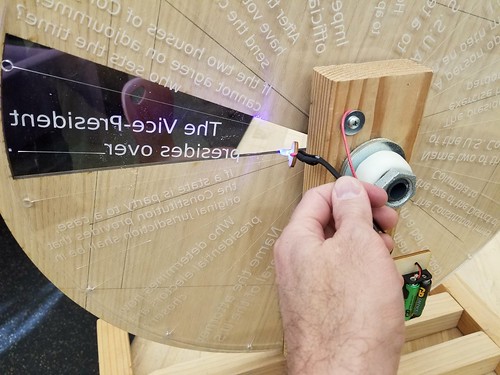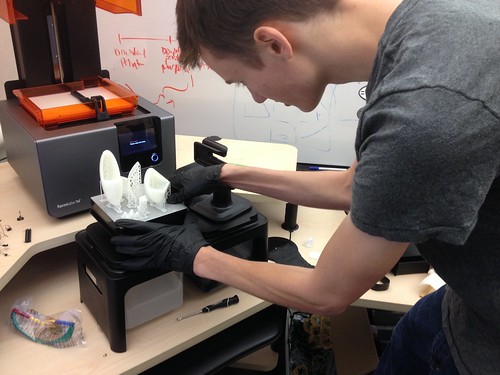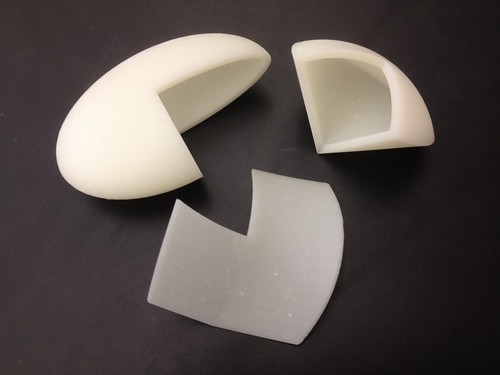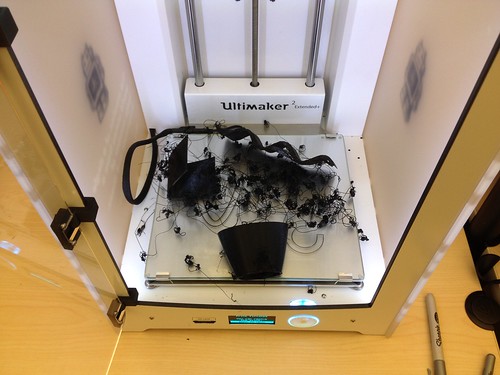Unsurprisingly, there’s been a lot of making in the makerspace lately. For instance, Sydney (student and Makerspace Facilitator) is working on this magnificent costume helmet.
It lights up. N’omi (student) has been manufacturing these custom cutting boards…
…and we freed the mycelium chimp face from it’s mold…
Meanwhile Sophie (student and Makerspace Facilitator) has been designing and producing these custom patterned rolling pins.
Meanwhile, Nicole (student and Makerspace Facilitator) has been directing the efforts of a skillful group of student interns as they continue with a large-scale, interactive periodic table that will be mounted in on of the large lecture halls on campus.
The lit up the latest prototype yesterday – it’s controlled by an Android app – and if this latest prototype is any indication, this project is going to be amazing!





